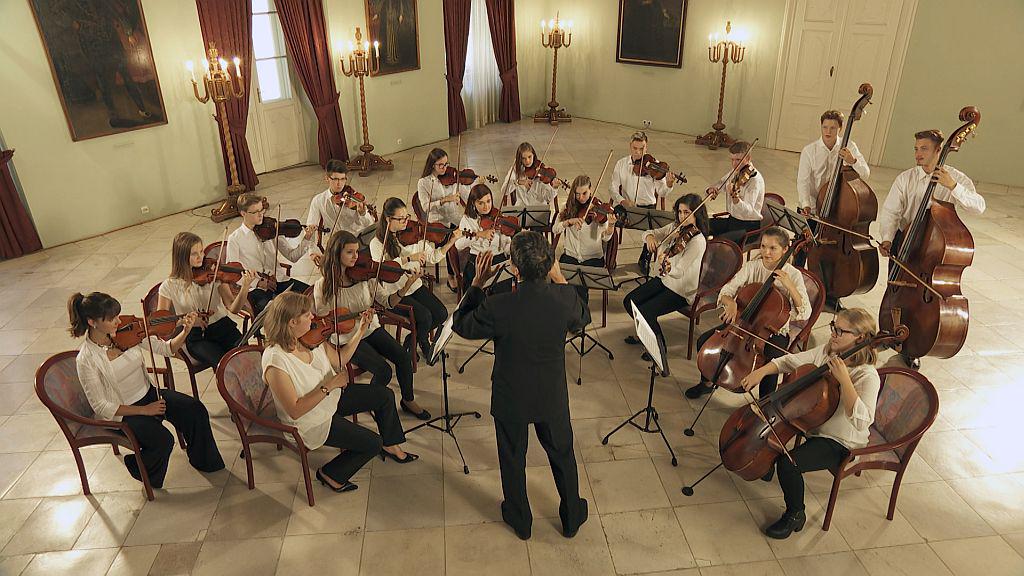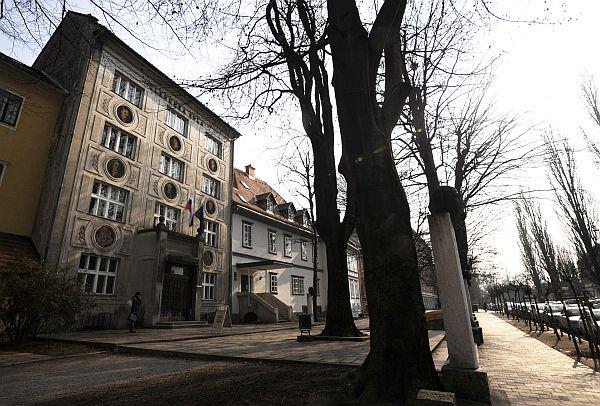


Music schools have a very long and interesting history in Slovenia, with the oldest sources dating them back to the Middle Ages. Copies of musical discussions and accounts of early musical education have been preserved from the 12th century onwards. Such efforts were initially focused within monasteries, and later also in large parish centres. Music, especially singing and the basics of musical theory, was included in the Protestant school programs in the 16th century, and in Catholic institutions in the 17th and 18th centuries. Many textbooks have survived from this era, with the most historically important being one written by an organist from Novo Mesto (Noten-Buch darinnen di Fundamenta zu dem Clavier oder Orgel enthalten).
The First Music Schools
The first public music school opened its doors in Ljubljana in 1815, with the mission to offer music lessons that were free of charge and accessible to everyone. There, students and teacher trainees alike studied different instruments and acquired basic musical knowledge. When an advertisement for the position of a music teacher was published in newspapers in Klagenfurt, Graz, Vienna and Prague, a staggering 21 candidates applied, including the young Franz Schubert.
Roughly at the same time, in 1820, the music school of the Philharmonic Society started its classes. Organized by a body called the Philharmonische Gesellschaft (1794–1919), this was one of the oldest civic societies in the former Habsburg Monarchy. The Society was founded by citizens of Ljubljana, the so-called musical dilettantes, with the aim of encouraging music, and especially instrumental music. They organised concerts with the Ljubljana Orchestra and, to meet their own needs, started a music school for stringed and wind instruments. The society had honorary members, including such luminaries as Hayden, Beethoven and Paganini. In 1891, a wonderful concert hall was built in Ljubljana – the Tonhalle in Kongresni trg square, which today houses the Slovenian Philharmonic Orchestra.
Later on, music schools were gradually opened in other Slovenian towns and cities, such as Trieste, Maribor, Celje and Ptuj. At first, music schools were established within the German musical societies, but later, as the reading room movement progressed, Slovenian music schools also started opening. The Glasbena matica Society played the most notable role in founding Slovenian music schools. It opened its own school in 1882 and continued by establishing associated institutions in Novo Mesto, Celje, Kranj, Trieste, Gorica, Maribor and Ptuj. The basic aim of these efforts was to encourage musical creativity and interpretation among the Slovenian people.
Music classes offer growing opportunities
Slovenian music schools experienced an important development after World War I. In 1919, the first Conservatory was founded, and two decades later the Music Academy opened. Thereafter, a number of music schools were opened and classes thus became widely accessible.
Although such developments were interrupted by World War II, in 1945 the number of music schools started to increase rapidly again, and the network expanded to include all large Slovenian towns and cities, with subsidiaries also opened in rural areas. From 1945 to 1960 the number of music schools grew five-fold, and had increased by nine times by 1990. The Organization and Financing of Education Act, adopted in 1991, guaranteed uniform financing for music schools and special forms of work with talented students.
Music in Slovenia today
There are 69 music schools in Slovenia today, 54 public and 15 private ones, offering official educational programs in music and dance. Almost 26,000 children attend such schools, and students from among these often achieve excellent results at international competitions, with many joining leading orchestras after graduation. Following the spirit with which they were first established, music schools are open to children from all social classes if they show sufficient musical ability. Since music is known to have positive effects on the overall development of young people, enabling them to grow their rational and emotional sides, and thus helping them to become more balanced individuals, such accessibility is especially important.
Slovenian music schools hold individual lessons in playing instruments, thus ensuring a very high quality of teaching. Besides working with their chosen instruments, children also attend classes in music theory, which allows them to read music and develop in terms of musical performance and creation. Group classes encourage socialisation, and from a musical point of view require the individual players to learn how to work in a group context. Especially important here are the presence of chamber groups, choirs and orchestras in these schools. By playing in a group, students learn how to tailor their personal interpretations and musicality to those of other players, and develop the skills needed for shared work, discipline and responsibility. As such, a diverse programme is included in music schools through numerous solo and orchestra concerts, contributing to the cultural lives of many Slovenian towns and cities.
As a jubilee year, 2016 has seen a number of events which connected musicians in different ways. The Slovenian School Museum prepared a retrospective exhibition, and a scientific symposium was organised by the Music Academy. The most prominent projects include the gala concert, which featured three symphonic orchestras comprised of the best young musicians from the country. On this occasion, the President of the Republic of Slovenia, Borut Pahor, awarded the Slovene Music Schools Association with the Sliver Order of Merit.
Boris Štih, Sinfo
Boris Štih is president of the Slovene Music Schools Association.

































































